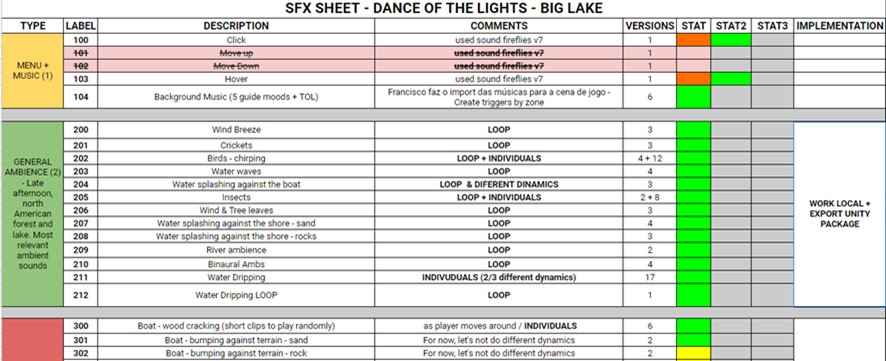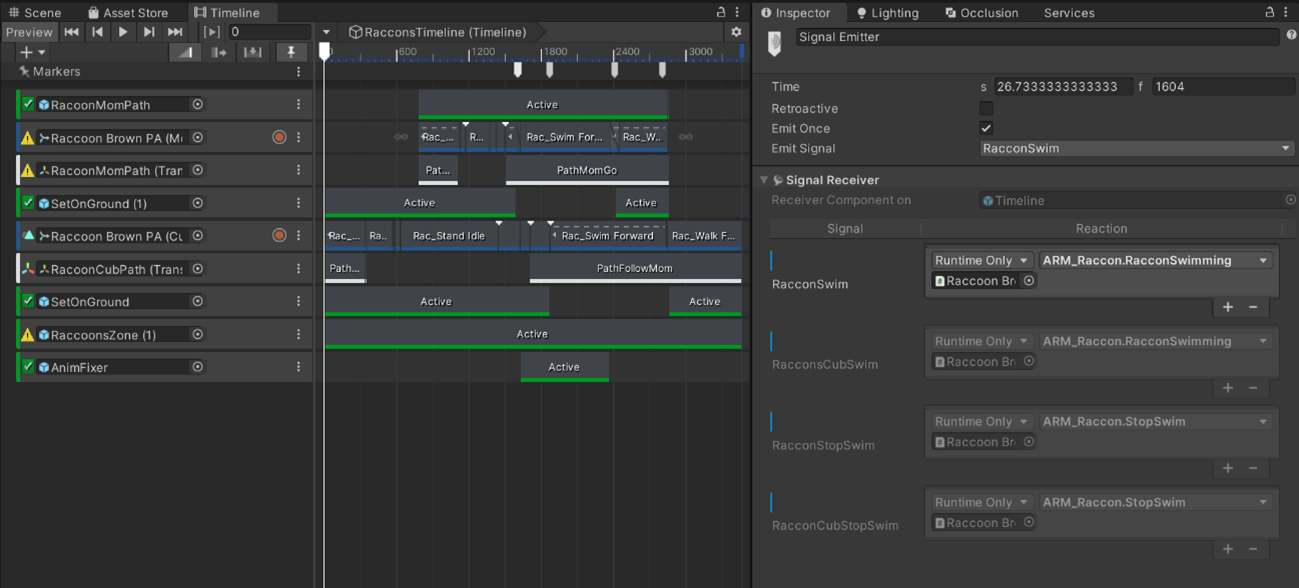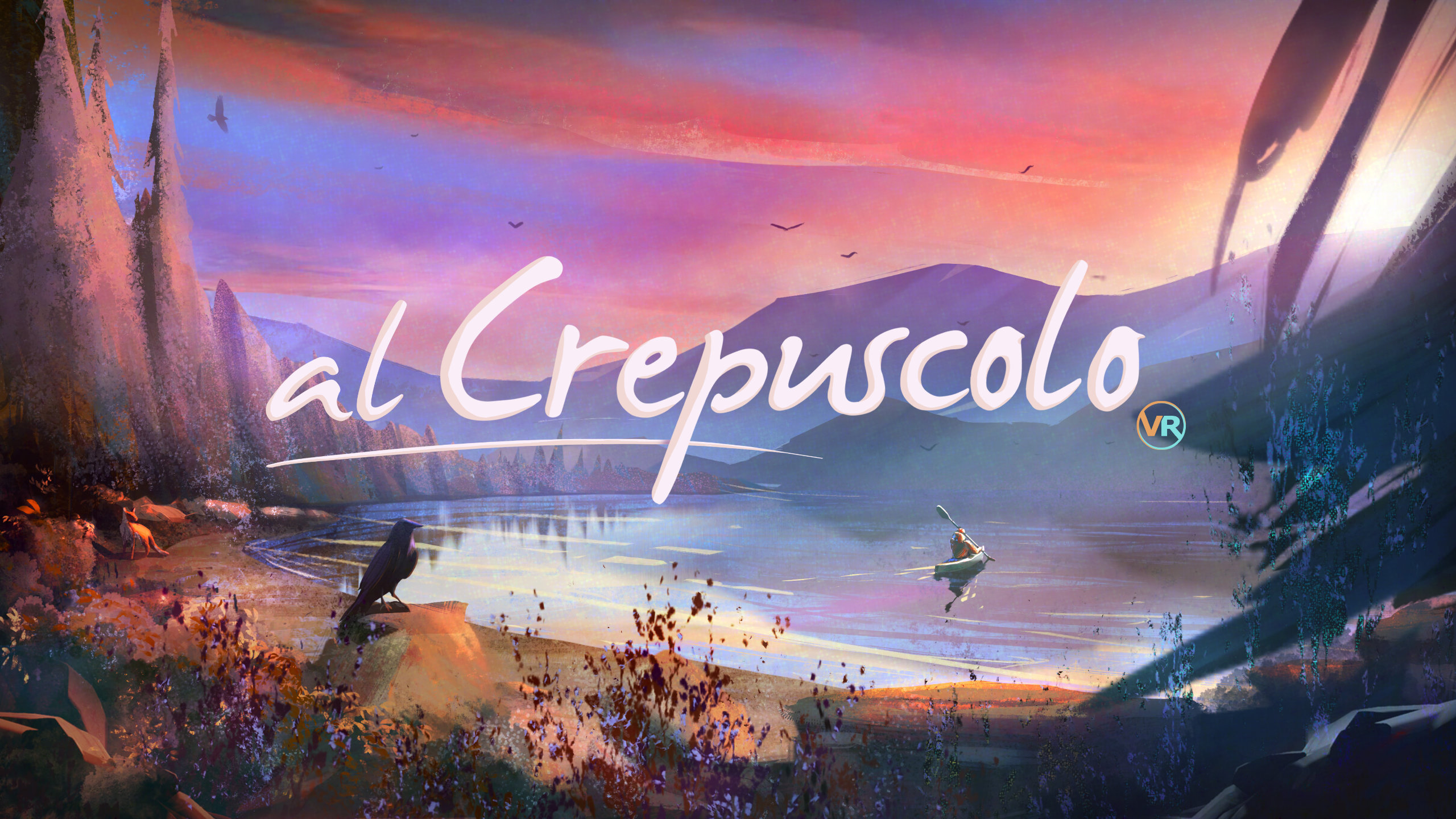Sound Design for Emotional Impact in VR - Part 1
Hi, it's Francisco and Telmo, the sound team behind Al Crepuscolo VR.
In a series of articles, we are going to explain the sound design and audio implementation fundamentals of Al Crepuscolo VR.
Team and Organisation
Our sound team consisted of the two of us: Telmo Gomes in charge of the sound design and the audio production, and Francisco Nascimento who was in charge of the audio implementation in Unity, using FMOD.
Even with such a small team, communication and organisation were essential: we had to be in constant communication with each other to keep all the audio assets organized and updated. That communication was done mainly using a spreadsheet, used as a task tracker and containing a reference to all of the sounds needed for the game, the category and context of each sound, how many versions we had, and a check box (using a color-coding scheme) that informed the team when and what sounds were produced and implemented or needed to be revisited after receiving some feedback. With this organisational tool, everyone got updated in real-time, and knew exactly what the other was doing.

What Can Sound Do for You?
One of the fascinating things about sound is that it can be used to accomplish many different things.
- It can influence the player to feel a certain emotion,
- Contextualizes the narrative
- Complements the visuals for the lack of kinaesthesia in videogames.

Also, one sound can have different meanings in two different contexts.
For Al Crepuscolo we started with an initial synopsis of the game and a screenplay. The latter was very useful to start shaping ideas and creating mental images of the environments and the moods of the different zones of the map.
The logline of the project, “Al Crepuscolo is an environmental narrative experience in Virtual Reality, featuring beautiful stylized art, music, and soundscapes that create a relaxing emotional journey through a pristine landscape”, helped us shape the main concept for the audio.
Stylistic Choices
Realism vs Stylisation
We opted to pursue a path of realism, instead of a more stylized approach to sound design. Our main goal was to immerse the player into a realistic sounding experience, with nature sounds, wild animals (it was kind of tricky to find decent samples, as they sound naturally loud and scary), and different moods for different areas. We wanted the player to enjoy a relaxing and engaging journey across the river. With this objective in mind, we chose several animals sounds, manipulated them by softening or warming the samples, thus achieving textures that sounded real, yet harmless to the player, improving the overall experience and avoiding breaking the immersion.
Diegetic and Narrative Sound
The most typical use of sound to highlights things that happen on the the screen: the player sees some animals walking down the forest, perceives the the river flowing (water splashes, waves, shore reverberation,…) or notices the trees being rocked by a breeze, for example and he/she expects to hear them make some sounds. All of these sound cues are very important to establish the credibility of the environment.
The sounds emitted by the animals around the forest were particularly challenging to design, because they had to have some kind of sonic credibility so that the player didn’t question them or noticed their technical implementation. This meant that the sound samples had to be organic and realistic, the sounds would have to match the size of the animals and the implementation also had to be timed with the animations happening on the screen.
The size of the animals is particularly useful to differentiate when several animals are grouped together: animals from the same species emit the same sound generally, but the bigger the animal, the lower the pitch of its vocalization will be. To accomplish this effect technically we programmatically changed some parameters of the same sample in our sound effect tool (we used FMOD for this project). A parameter was linked to the size of the animals. The parameter value modulated the pitch and volume of the vocalizations.
To time the steps of the animals to the actual foot contacts on the ground, we dropped several events (the white bookmarks in the image below) inside the animation timelines of each animal to play the sound at the exact time when the foot of the animal was touching the ground.

We also programmed many start and stopping points for the animal sounds (vocalizations, footsteps, splashing, etc.) using “signal emitters”, which are an useful messaging system to make Unity Timelines interact with other scripts within Unity.

That's all for now!
In the next part, we'll tell you more about how we grabbed the player's attention through sound and how we defined space and mood using some neat tools available in Unity and FMOD.
Take care!
Al Crepuscolo VR - Sound Team
Get Al Crepuscolo VR
Al Crepuscolo VR
A relaxing musical journey through nature in virtual reality
| Status | Released |
| Author | FIREFLIES |
| Genre | Simulation |
| Tags | Atmospheric, Casual, Music, Non violent, Oculus Rift, Relaxing, Short, Virtual Reality (VR) |
| Languages | English |
| Accessibility | Subtitles |
More posts
- Review on VR VoyagingJul 03, 2024
- Selection at the Kaboom Animation Festival!Feb 21, 2023
- The Winter Sale has started!Dec 22, 2022
- Update 1.0.3 availableDec 13, 2022
- Al Crepuscolo VR is AVAILABLE now!Nov 22, 2022
- Al Crepuscolo launching tomorrow on itch.io!Nov 21, 2022
- Launch date: SAVE THE DATE!Nov 08, 2022
- Sound Design for Emotional Impact in VR - Part 2Apr 27, 2022
- New Gameplay Trailer is out!Mar 22, 2022

Leave a comment
Log in with itch.io to leave a comment.